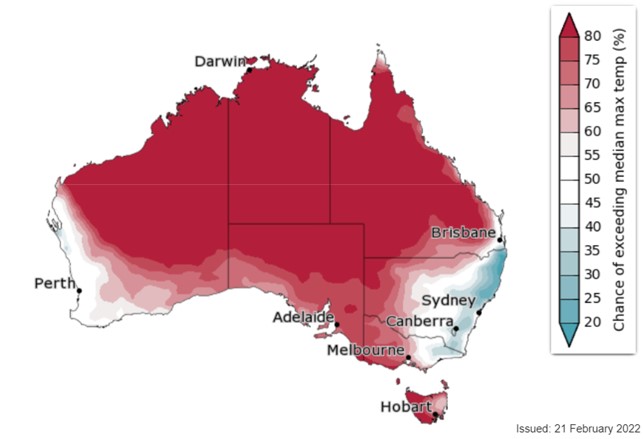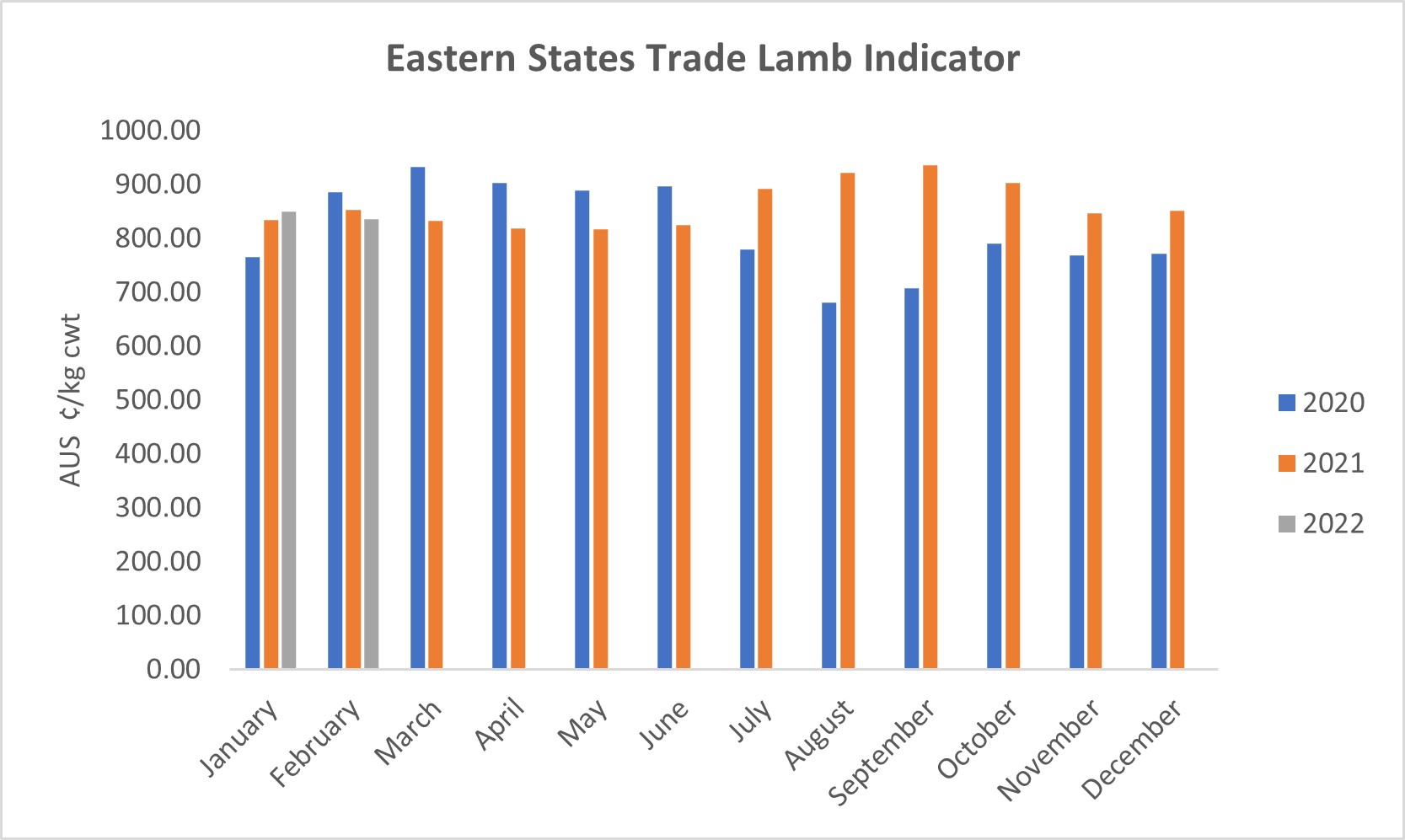Australia’s Lamb Slaughters and Export Forecasted to Increase in 2022

Growth in flock size
According to MLA’s national forecast for sheep and lamb numbers, the flock is expected to grow 4.9% in 2022 to 74.4m head with the growth being driven primarily by flocks in the states of New South Wales and Victoria. The growth is a testament to the strength of the sector, as similar flock head counts have not been seen since 2008.
The Australian lamb industry is heavily dependent on rainfall in creating an abundance of feed in the lands grazed by the animals. The Australian Bureau of Meteorology predicts conditions of upwards of five degrees higher temperature than normal during Mar-May. 2022. However, the effects are unlikely to be evenly distributed as the producers near Adelaide and Melbourne are more likely to experience above-median temperatures, whereas producers near Perth, Canberra and Sydney have lower chances. If these predictions come true, water supplies and available feed on pastures may become scarce in affected regions which can ultimately lead to farmers being forced to send animals for slaughter prematurely.

Source: Bureau of Meteorology
Slaughters and export
As a result of the large size of the 2021 lamb group, MLA expects large numbers of lambs to hit the market in the early months of 2022. For the year, lamb slaughters are forecasted to reach 21.60 million head in 2022 equivalent to a 6.6% increase, while production volume is forecasted to increase 7.6% YoY to 540,000 mt cwt. With strong demand expected both domestically and internationally, Rabobank estimates that lamb will be traded just above 8 AUD/kg in 2022.

Source: MLA ESTLI
The largest export market for Australian lamb is China which in 2021 reached 120,224 mt, followed by USA (93,349 mt), Malaysia (25,819 mt), UAE (16,830 mt) and South Korea (16,105 mt). While the movements in these markets generally were small in 2021, the USA lifted their import volume from Australia by 18.8% YoY taking Australia’s share of import market share in the USA to 73.30%. Australia’s lamb exports may well continue to grow in 2022, as the U.S. sheep and lamb inventory has declined 2% YoY at the start of 2022 due to processing challenges and poor weather in production regions combined with high prices leading many producers to send animals to slaughter in 2021.
China is expected to maintain their high demand with Chinese consumption projected to grow 10.9% by 2030, just short of the expected global increase of 14%. With Australia already holding a strong position on the market and with the infrastructure to cater to a growing demand, the country is set for meeting the demand of markets that lack domestic supply.
The market of the United Kingdom may also present new opportunities for Australian lamb exporters in 2022, as the Australia-UK Free Trade Agreement enter into force. The provisions of the free trade agreement allow for up to 25,000 mt of sheepmeat to enter the UK without being subject to tariffs, which potentially could substantially lift the AUS-to-UK export quantity of lamb which in 2021 reached 6,292 mt.
These positive market trends lead MLA to forecast an increase in exports from 340,000 mt in 2021 to a record 370,000 mt in 2022, equivalent to a 8.8% increase.



